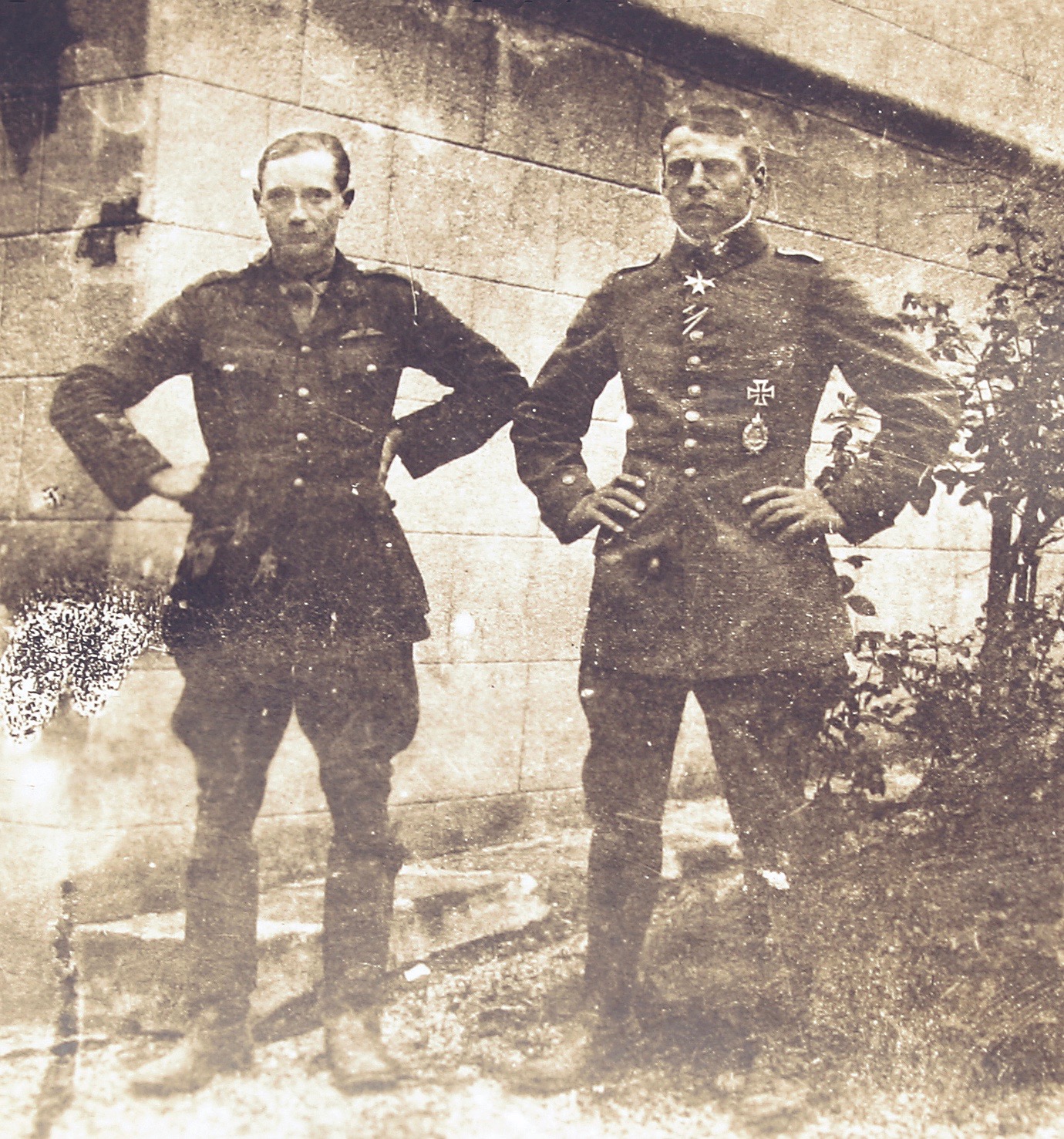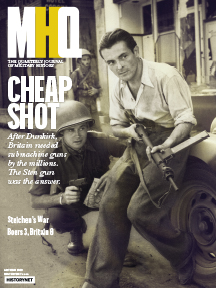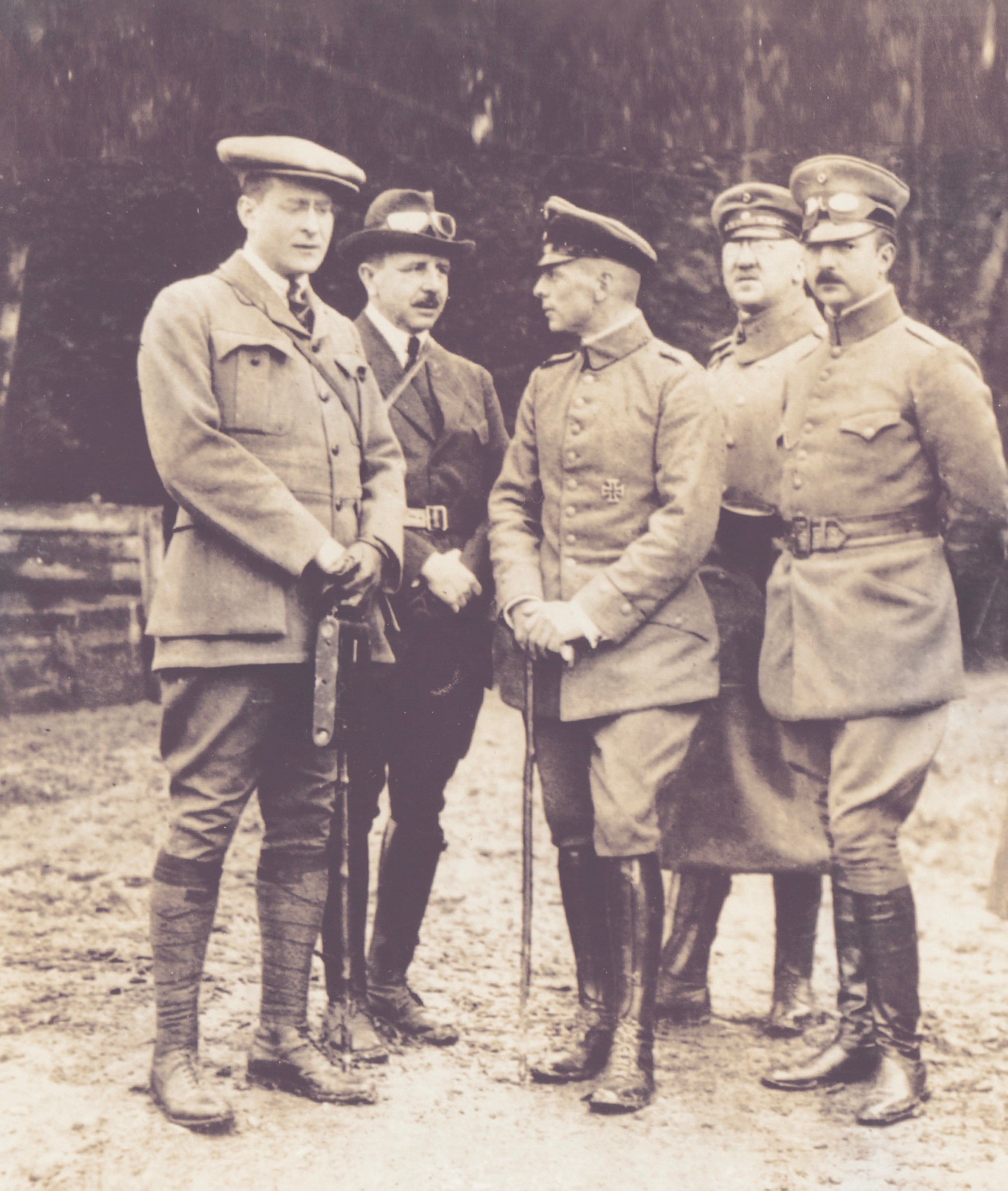Herbert Bayard Swope was born in St. Louis in 1882, the son of German immigrants Isaac Swope, a watchcase manufacturer, and Ida Cohn. His father’s firm went bankrupt in 1896, and his father died three years later, forcing Swope, at age 17, to find work. Attracted to journalism, he became a reporter for Joseph Pulitzer’s St. Louis Post-Dispatch and soon moved to New York, where he went to work for the Pulitzer-owned New York World. He was a natural in the news business, and when hostilities broke out in Europe in August 1914, the World sent Swope to Germany as a war correspondent. He returned to New York the following year to become the World’s city editor, but by 1916 he was back at the front to cover the war. Soon after the United States declared war on Germany in 1917, Swope was commissioned in the U.S. Navy and became an assistant to Bernard Baruch, the Wall Street financier President Woodrow Wilson had tapped to serve as chairman of the U.S. War Industries Board. A series of articles Swope wrote before the United States entered the war—one of which is reprinted, slightly abridged, here—formed the basis for his 1917 book, Inside the German Empire: In the Third Year of the War, which won the first Pulitzer Prize for Reporting.
In 1919 Swope was elected head of the U.S. press delegation to the Paris Peace Conference, and in 1920 he became the New York World’s executive editor. In that role he established the first modern op-ed page and launched a 21-day crusade against the Ku Klux Klan, which was picked up by more than a dozen other newspapers and won the Pulitzer Prize for Public Service in 1922. Six years later, however, Swope resigned from the newspaper and never again worked as a journalist, though he tried to buy the World when the Pulitzer family put it up for sale in 1931. (A multimillionaire from stock trading, Swope was also a legendary poker player, once reportedly winning $470,000 in a single evening.)
During World War II Swope was a consultant to Secretary of War Henry L. Stimson. After the war, Baruch made Swope his assistant on the United Nations Atomic Energy Commission; Swope is said to have coined the term “cold war” in a speech he wrote for Baruch in 1946. Swope died in 1958 at age 76. “Swope had enough initiative and enough brass so that if you wanted to meet God,” David Sarnoff, the visionary behind RCA and NBC, once said, “he’d arrange it somehow.”
It is given to few men in this war of bitterness and hatred to achieve popularity both among their own people and the enemy, and it is rarer among the Germans, who generally scorn the arts leading to it. [Paul von] Hindenburg, [August von] Mackensen, [Karl von] Muller of the Emden, [Otto] Weddigen of the U-9 are four Germans who have attained this goal in their own country and in England and France, and to this list must be added the name of Captain [Oswald] Boelcke of the German Flying Corps, who shot down thirty-eight enemy aëroplanes before he was killed by a collision with a German machine behind his own lines in late October.
The day that Boelcke scored his twentieth victory I talked with him for an hour. It was early in October, near Bapaume, and the drumfire of the Somme Battle, which had been raging since June 23, rolled and crashed about us, a thing alive and monstrous. The air was fairly dotted with skymen, while he, the chief of them all, sat quietly under a hangar and let me learn why he was held in such high esteem by friend and foe. For his charm and modesty commanded respect and affection apart from his ability as a fighting flier, and in that capacity he was the greatest the war has produced. He made his record in the face of the English dominance of the air, for that, apart from Zeppelins, the English surely possess. And in building his fame he built a technique of war aviation that is a standard for all tacticians of the clouds. So the story of Boelcke is the story of a man and a master. When he “went,” the English and French fliers threw flowers behind the German lines in his memory, and his casket, when he was buried, bore a great wreath from British prisoners in the empire. Only among the aviators of the fighting armies is one certain to find that chivalry which once was never dissociated from war. Theirs is the special heritage of preserving the knightly tradition. The extraordinary bitterness of the other arms of the service makes the contrast all the sharper.

I came into contact with something like thirty or forty German fliers and several English and French airmen along the Somme front, and Boelcke was a fair representative of the lot. His twentieth “bag,” made just before I saw him, illustrates the regard the English have for him. Captain [Robert E.] Wilson of the Royal Flying Corps, attached to a station near Pozières, was flying over the German lines when Boelcke rose to meet him. Boelcke outguessed, outmaneuvered, and outshot the Englishman, who dropped safely to the ground after having a wing broken. Boelcke landed near him, and in surrendering, the Englishman asked the name of his captor. “Boelcke,” replied the German.
The chagrin and humiliation of defeat and capture were forgotten for a moment as the Englishman put out his hand and, as Boelcke shook it, said: “If I had to be shot down, I am glad it was by so good a man.”
Wilson was sent back to Cambrai. The next day Boelcke invited him to lunch with the officers at the flying park, where the captured flier expressed appreciation of the exceptional treatment he had received and told of the high regard in which the English held the German fliers. That night he was sent to a German prison camp.
When I talked with Boelcke, through the courtesy of the German general staff, which usually makes a rule against personal exploitation, I found him to be a good-looking young chap, twenty-five years old, of the thin, wiry, quick, and graceful type usually associated with airmen. His manner of thought was simple and direct, and his conversation modest and responsive.
We met at his station at an old château only a few kilometers from the heaviest fighting, in which he was daily engaged; but his appearance was neat, as is that of all the German officers, his face newly shaved, his uniform clean, and ornamented only with the Iron Cross of the first class. In talking of his work he made it plain that he held it to be a duty, not a sport, as do most of the Englishmen, to the bewilderment of the Germans.
“How many of the twenty that you shot down lived after the fight?” I asked Boelcke after congratulating him on his skill and courage and telling him of America’s interest in his heroism.
“Only two, unfortunately,” he replied with feeling. “All fought so well that I was sorry luck was against them. I think most of the eighteen were killed by bullets from my machine or died in the fall, a few meeting death when they smashed to the ground. One Englishman, Wilson, and a French officer remained alive. The others died for their country.”
When I asked for a comparison between the English and the French fliers Boelcke hesitated, and then said he had noticed no great difference. Both, he said, were courageous and skillful, with perhaps a distinction to be observed in the spirit animating them, the English never lacking the spirit of sport, so inexplicable to the German mind, while the French took it fatalistically and with grim earnestness.
Boelcke stood about five feet seven, cleanshaven and red-cheeked, with gray-blue eyes that never left the questioner. He had a thin Roman nose, a soft voice, and rather quick enunciation. He carried a cane of necessity because of a recent wound. He had been wounded several times, but never seriously.
He wore the field-gray uniform of an infantry captain, with propellers on the shoulder straps as insignia of the service. Before the war he was attached to the infantry, and in common with other flying officers, he clung to the old regimental uniform because of the traditions behind it. Only those younger men who have joined the fliers since the war began wear a distinctive flying-corps uniform. All the others wear their old outfit.
Before we talked of his work he said half jestingly: “Since you will write for America, you might straighten out one point. The London papers credit me with having lived in America and been a lift-boy there, getting my flying experience in that way. I was never in America, and never happened to be a lift-boy. Just before the war began I lived in Dessau, and did some flying there. I liked the work, and when I was called out to join the Prussian forces I went into the flying branch. I hope to visit America for the first time after the war.”
When Boelcke went into flying he was first an observer and later a pilot; then he was shifted because of his steady eye, sure nerves, and splendid courage, into the fighting detachment, where he did nothing but fight off hostile aëroplanes scouting over the German lines or go to the relief of his own people attacked while on observation duty.
He always flew alone. There was an observer’s seat in his machine, but he never used it. In fact, most of the German fighting fliers travel alone. This is to minimize the risk, and, by engaging the enemy, give the observation machines a chance to get back with information.
‘‘The English say that no German fighters and few observers cross their lines; but that they fly over their own troops,” I said to Boelcke.
“That isn’t true as regards the observers,” he answered earnestly. “They have done much good work over the enemy’s forces. It used to be true in part about the fighters. That was at first, because there were several parts of our new Fokkers that we wanted to keep secret; and second, because it was important that we remain on guard in our own territory to prevent the enemy’s observers gaining information. Lately circumstances have changed, and we fly everywhere. Obviously, it is the best tactics to bring your man down behind your own lines, so he can be made a prisoner if alive and his machine kept from the chance of the enemy repairing it. Each of us follows the fight through now, no matter where it takes us.”
Boelcke’s modesty kept him from saying that five of his quarries were shot down inside their own lines. His brother officers, by whom he was much liked, said that the English always tried to seek out the neighborhood in which he was supposed to be, in the hope of having a go with him. But he held to the strictest duty, and never went into action unless directed to do so. In other words, he held to the spirit that is a striking characteristic of the whole German army—teamwork. That is what made Boelcke so well liked.
Boelcke paid a high tribute to Lieutenant [Max] Immelmann, who had been killed shortly before, after making his twelfth score, and added that what he and Immelmann had done was possible with equal luck for all the other flying officers. But that there is more to Boelcke’s record than mere luck was shown the day after he shot down his twentieth prize, when two of his companions, [Hans] Rosencrantz and [Wilhelm] Falbusch, were shot down in trying to stop an English raiding party of eight aëroplanes bombing railroad stations. The courage with which they took on a fight with so superior a force was typical of the German fliers.
When I asked Boelcke about the methods he used in his big-game hunting, he replied:
“I use no special formula except to try to get my man before he gets me. Almost all fighting aëroplanes are similarly rigged, with a machine gun fixed in front of the pilot. As the gun is stationary, to get it into position I must maneuver my machine, and this is done best by outflying the enemy and coming into him from the rear. I am violating no military secrets in saying this because air fighting, regardless of nationality, is almost always conducted on similar lines. I do not try to outclimb my adversary and come down on him, shooting as I come, but rather to outspeed and outsteer him, gaining the rearward position, where my shots go home while he has nothing to shoot at. I turn as he does, for if he made a quicker or shorter bank than I, he would be able to rake me. To gain speed, we Germans fly light, and as speed is essential in the fighting end, the fighting fliers usually fly alone.”
Boelcke had had five machines smashed under him, but always volplaned to earth successfully until the fatal trip late in October 1916. His favorite machine had the lines of a bird. Even close at hand it looked tiny, being much smaller than the French and British planes.
He used a specially cooled machine gun, firing ordinary rifle ammunition. The gun had a pistol grip and trigger, and he fired it with one hand, steering with his feet and balancing with the free hand on the wheel. Boelcke and the other German fliers declined to use anything but regular rifle ammunition fed by the usual web belt, and shooting at a speed that is greater than that of the ordinary automatic pistol, sometimes exceeding five hundred shots a minute.
It was a matter of ammunition that, after two years of chivalry among the knights of the air, threatened to lead to great bitterness. The Germans accused the English fliers of using incendiary bullets in their machine guns. These cartridges, slightly larger than the usual rifle-shell, carry an explosive chamber that ignites in flight and inflames the substance against which it is shot. As aëroplane wings are oil-coated, they are highly combustible, and several disasters overtook German fliers in this way. The German military authorities resented the new tactics, and talked of making an example of captured Englishmen who had employed what Germany held to be an unfair and illegal method. Rosencrantz and Falbusch were shot down in this way.
The Germans call their anti-aircraft guns “flak,” deriving the nickname from Flieger-abschuss-kanonen. Every park has its own equipment of protective armament, and every series of observation balloons has at a central strategical point a “flak” battery. The abbreviation style they lifted from the British “Anzac”—Australian–New Zealand Army Corps.
“I hope to see you again in happier times,” said Boelcke in parting. “We Germans don’t want to fight, but so long as we are forced to, you may be sure we will, and fight so that we shall never be beaten.”
And with a wave of his hand Boelcke turned to his quarters to climb into flying clothes. Three weeks later they dressed him in his shroud. MHQ
[hr]
This article appears in the Autumn 2019 issue (Vol. 32, No. 1) of MHQ—The Quarterly Journal of Military History with the headline: Classic Dispatches | Knight of the Air

Want to have the lavishly illustrated, premium-quality print edition of MHQ delivered directly to you four times a year? Subscribe now at special savings!

